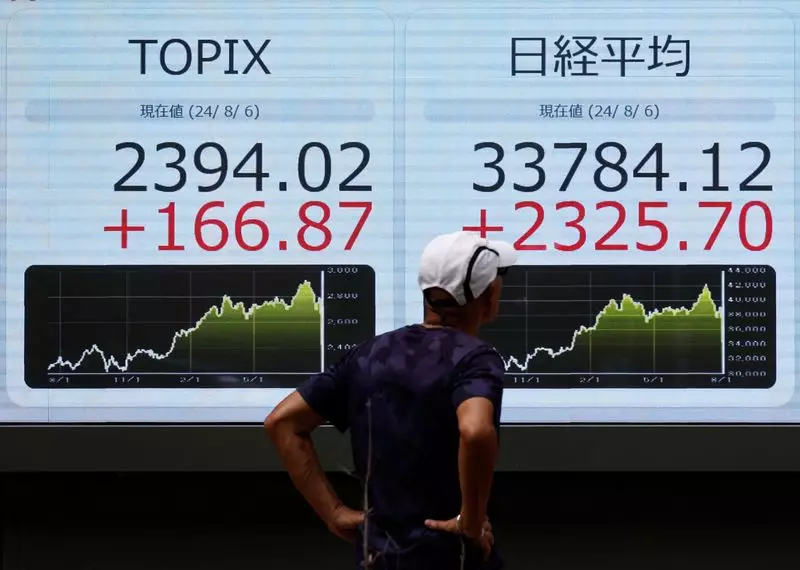Asian stock markets experienced a notable increase, reaching the highest levels in more than two months, driven by investor optimism following the recent announcement of significant interest rate cuts by the U.S. Federal Reserve. This sentiment has created an environment conducive to risk-taking among investors. As many eyes are on the Reserve Bank of Australia (RBA), speculation surrounds the potential for similar monetary easing in the region. The financial landscape appears buoyed by the anticipation of supportive economic measures, particularly as several central banks maneuver through uncertain economic waters.
Amidst these developments, China’s financial regulators, including its central bank, rolled out a series of comprehensive measures aimed at revitalizing the country’s flagging economy. A significant component of this strategy is the adjustment of mortgage rates for existing homes, designed to alleviate some financial pressures on homeowners and potentially stimulate consumer spending. Investors are hopeful that such initiatives will invigorate China’s economic growth, which has recently exhibited signs of struggle, thereby influencing broader market performance throughout the region.
As the market anticipates the RBA’s upcoming policy decision, analysts predict that the bank will maintain its current interest rates, adhering to a cautious approach in response to ongoing inflation pressures. Charu Chanana, head of currency strategy at Saxo, suggested that any major shifts in monetary policy from the RBA might not materialize until the November 5 meeting, which will occur after critical labor market data and the third-quarter Consumer Price Index (CPI) results become available. This cautious positioning indicates the RBA’s commitment to managing inflation expectations while carefully weighing economic conditions before making any decisive moves.
Reflecting this positive sentiment, the MSCI index for Asia-Pacific shares outside Japan witnessed a modest increase of 0.04%, indicating investor confidence. Japan’s Nikkei index notably surged by 1.69% during early trading, reaching levels not seen in nearly three weeks. This rise is particularly intriguing given the looming speech from Bank of Japan Governor Kazuo Ueda, which is expected to shed light on future monetary policies and market strategies in Japan. Overall, this uptick in Asian stock indices underscores the balancing act investors are engaged in between the prospects of future central bank actions and current economic realities.
While Asian markets react to local developments, the U.S. stock market closed slightly higher as traders absorbed the implications of the Federal Reserve’s recent rate cut of 50 basis points. Fed officials have indicated the necessity for this reduction to align with broader economic goals, underscoring the balancing act of stimulating growth while managing inflation. Chicago Fed President Austan Goolsbee expressed confidence in this approach, highlighting the importance of staying proactive and avoiding being “behind the curve” regarding economic recovery efforts. However, varying opinions suggest that market expectations may be overly optimistic about the potential for further rate cuts.
In the realm of currencies, the U.S. dollar index, which gauges the dollar against a basket of six currencies, remains close to its one-year low. This suggests a weakening stance for the dollar, potentially driven by the dovish sentiment from the Fed and ongoing concerns regarding economic health. The Japanese yen and euro also exhibited modest fluctuations amidst mixed economic indicators, with the euro experiencing setbacks following disappointing business activity reports that may prompt further interest rate cuts from the European Central Bank.
Meanwhile, the commodities market has witnessed slight upward movements, particularly in oil prices. Brent crude and U.S. crude experienced minor increases, although broader concerns over demand and soft economic data from Europe continue to pose risks. As prices stabilize, industry watchers remain attentive to the intertwining influences of geopolitical factors and changes in economic data across regions.
As Asian markets navigate the complexities of domestic economic policies and external factors such as U.S. monetary policy changes, the evolving financial landscape signifies the need for continuous vigilance and strategic insight from investors.

